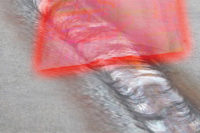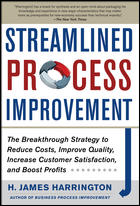When it comes to ensuring that defects in welds are detected in an assembly line, nondestructive testing (NDT) is an essential tool. Without a means of assessing potential errors in welds, welding would be risky business.
Not all NDT technologies are alike, however. Just as some techniques are becoming phased out, newer and more operator-friendly versions are taking their places. While welding defects aren’t changing, the materials used to complete the welds are, and therefore the NDT technologies continue to evolve.
Additionally, some nondestructive evaluation (NDE) technologies are better suited than others to specific types of welds. “It is important to keep in mind that no best method of NDE exists,” says Pierre Huot, president at Invisual e. Inc. “The most effective and efficient method for evaluating one part may be completely inappropriate for evaluating another. The area that you are inspecting and the type of defect you are looking for are the primary factors that determine which NDE methods are best for the job.”
In a recent interview with NDT, Huot discussed these primary factors, as well as what NDT techniques are becoming more popular.
NDT: What are different types of weld defects and their corresponding NDT inspection solutions?
Pierre Huot: Weld defects are typically classified as surface defects and sub-surface defects. Knowing the defects you want to identify will help identify the techniques to reliably detect them. This bag of tricks is called NDE, also known as nondestructive testing (NDT) and nondestructive inspection (NDI). The most common traditional techniques are: visual inspection, eddy current, magnetic particle testing, liquid penetrant and ultrasonic testing and X-Ray.
If the defect is on the surface, one should consider these techniques: eddy current, magnetic particle testing, liquid penetrant and ultrasonic testing and X-Ray. If the defect is sub-surface, one should consider these traditional techniques: ultrasonic, X-Ray and eddy current. The most popular methods in this category are eddy current and ultrasonic methods, however, they do require a trained operator to understand what to look for, what the signals mean on the graph. Probe positioning can also be problematic as it could lead to false positives or no detection of a real defect.
NDT: Could you explain what probe positioning is?
PH:Both eddy current and ultrasonic testing methods utilize a probe that essentially sends a signal out and reads the resultant return signal. If the probe is at the incorrect angle, or wrong position, there is the potential for an erroneous reading.
NDT: What technologies are becoming less popular for weld process monitoring?
PH:The traditional technologies that are becoming less popular are liquid penetrant and magnetic particle testing. Magnetic particle inspection is restricted to ferromagnetic material, and is not fail safe as it is prone to improper test procedures. Liquid Penetrant is less sensitive than the other methods and uses a considerable amount of consumable.
Surface defects—which are the majority of defects—some of these include: cracks, porosity, slag inclusions, gaps, inconsistent weld bead profile, undercut, and concave/convex welds to name some.
The emerging technologies include welding cameras, 2-D and 3-D laser-based scanning, thermal imaging, and arc monitoring in combination of these techniques. Here, a company has a 360 view of their quality indicators, so the approach is more than just monitoring quality, but also the process.
NDT: What welding materials are changing and what techniques do you see on the horizon?
PH:It has been a trend for a few years, but the metal fabrication industry is still trending towards HSLA, or High Strength Low Alloy, metals. This means the material is thinner, lighter, but also harder to control and more susceptible to weld faults.
NDT: How much simpler have our new NDT technologies made the inspection process in comparison to the technologies that are being phased out? Is there a way to quantify it?
PH:Quantify no, but the instrumentation on the older technologies requires some knowledge on how to interpret what is being displayed on the screen. The new technologies have a better HMI or presentation of information for the operator. Also, keep in mind that companies want their operators to ramp up the learning curve faster today so that the firm can minimize potential defects due to operator error.
NDT: Can you explain how a manufacturer might go about deciding which technology is right for it?
PH: The fundamental decision for a manufacturer is if they want to find a surface defect or an internal defect. This is the major decision node.
NDT: What are the most common weld defects and their corresponding inspection solutions?
PH:It is important to distinguish between a weld defect and a discontinuity. A weld defect has, by its nature, rendered a part or product unable to meeting applicable standards and is a candidate for reject.
A discontinuity is an interruption of the structure or the material—mechanical, metallurgical or physical. A discontinuity is not necessarily a defect if it can be repaired. There, everything starts out as a discontinuity and either stays in this category or is classified as a defect.
The most common types of surface discontinuities are: misalignment, undercut, concave/convex weld, overlap, burn through, weld gaps, cracks, and porosity. The most common types of internal discontinuities are: incomplete penetration, incomplete fusion, cracks, inclusions, HAZ irregularities, and impurities.




